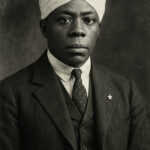Visualization is a powerful mental technique that involves creating vivid images of your goals to enhance focus, motivation, and performance across various personal and professional endeavors.
Visualization is a powerful tool that can help you achieve your dreams. By focusing your mind and emotions on your goals, you can create a path to success. Curious about how to harness this technique?
Jump to section
Understanding visualization and its impact
Visualization is the practice of creating mental images to achieve specific goals. It’s more than just daydreaming; it involves clearly picturing what you want in your mind. When you visualize, you activate your brain’s ability to innovate and work toward your aspirations.
Research shows that athletes often use visualization techniques to enhance their performance. For example, a basketball player might imagine making a perfect shot before stepping onto the court. This mental rehearsal helps to build confidence and improve actual performance in the game.
Moreover, visualization can have emotional benefits as well. By picturing successful outcomes, you can reduce anxiety and boost your motivation. When you consistently visualize positive experiences, it creates a sense of certainty that can influence your actions in real life.
Overall, visualization empowers individuals to take control of their goals. By understanding how to effectively utilize this technique, anyone can start to notice changes in their focus and achievements.
Historical figures who used visualization
Many historical figures have harnessed the power of visualization to achieve their goals. One famous example is Thomas Edison, the inventor of the light bulb. Edison often visualized his inventions clearly in his mind before putting them into action. This mental practice helped him solve complex problems and make breakthroughs in his work.
Another notable figure is Jim Carrey, the successful actor and comedian. Early in his career, Carrey wrote himself a check for ten million dollars for “acting services rendered” and dated it for Thanksgiving 1995. He visualized achieving this goal consistently, and by that time, he earned that amount for his role in the movie “Dumb and Dumber.”
Oprah Winfrey, a prominent media executive, has credited visualization with her success. She regularly uses vision boards to manifest her dreams and desires, including her career achievements and personal goals. These practices have allowed her to visualize her success and inspire others to do the same.
These examples show how powerful visualization can be in the lives of influential people. By picturing their goals, they were able to focus their efforts and achieve remarkable results.
The science behind visualization

The science behind visualization involves understanding how our brain works when we picture specific outcomes. Studies show that when we visualize a task, the same neural pathways are activated as when we actually perform that task. This process helps reinforce our skills and increases our chances of success.
Researchers at Harvard University conducted studies revealing that visualization can lead to actual improvements in performance. Participants who practiced visualization techniques showed better results in physical tasks, like throwing a basketball, compared to those who did not use visualization. This suggests that our mental rehearsals can enhance our physical abilities.
Moreover, visualization can affect our emotions. When we picture positive outcomes, our brain releases dopamine, a neurotransmitter that promotes feelings of happiness and motivation. This boost in mood can make us more likely to take action toward our goals.
Understanding the science behind visualization encourages many people to adopt these techniques. By actively engaging our brains in this way, we can improve not only our skills but also our mindset, helping us move closer to our dreams.
How to practice visualization daily
Practicing visualization daily can significantly enhance your ability to achieve your goals. One effective method is to set aside time each day, preferably in the morning or before bed, to focus on your visualization practice. Find a quiet space, close your eyes, and take a few deep breaths to relax your mind and body.
During this time, picture your goals clearly in your mind. Imagine every detail, such as where you are, what you are doing, and how you feel. Try to evoke the emotions associated with achieving your goals. For example, if your goal is to give a successful presentation, visualize yourself confidently speaking to an engaged audience.
Another helpful practice is to use vision boards. Collect images, quotes, and other materials that represent your goals. Arrange them visually on a board and place it where you can see it daily. This constant reminder can help keep your goals at the forefront of your mind, reinforcing your visualization efforts.
Lastly, consider journaling about your visualization experiences. Writing down your goals, the details you visualize, and any feelings you have can create a deeper connection to your aspirations. Over time, this practice can create a strong path toward realizing your dreams.
Common misconceptions about visualization
Many people hold misconceptions about visualization that can hinder their understanding of its true potential. One common belief is that simply imagining a goal will lead to success without taking action. However, while visualization is a powerful tool, it must be combined with effort and determination. It serves to reinforce motivation and clarity but does not replace the need for hard work.
Another misconception is that visualization is only for athletes or performers. In reality, anyone can benefit from this practice, regardless of their goals. Whether it’s improving personal relationships, advancing a career, or achieving wellness, visualization can be a valuable technique for anyone looking to enhance their life.
Some think that visualization is just wishful thinking. In contrast, it is a scientifically backed practice that engages both the brain and emotions. When done correctly, visualization can activate neural pathways similar to those used during actual performance, reinforcing skills and confidence.
Lastly, many believe that visualization requires special training or skills. In fact, it is a simple practice that anyone can learn. By taking a few minutes each day to visualize their goals and dreams, individuals can start reaping the benefits without any special preparation.
Integrating visualization into your routine

Integrating visualization into your daily routine can enhance your focus and motivation. Start by selecting a specific time each day dedicated to this practice. Many people find that early morning or right before bed works best. During these moments, you can clear your mind and set a positive tone for the day or wind down effectively.
To begin, find a comfortable space where you can relax. Close your eyes and take a few deep breaths to center yourself. Next, visualize your goals in detail. For instance, if you aim for a promotion, picture yourself at work, receiving recognition and filling your role with confidence. This mental image can help strengthen your commitment to your aspirations.
In addition to daily sessions, consider creating visual reminders of your goals. This could be in the form of a vision board, which displays images and phrases that represent your dreams. Place it in a spot you see often, so it serves as a constant reminder to visualize your success.
Finally, journal about your visualization experiences. Writing down your feelings, insights, and any progress toward your goals can deepen your connection to the practice. Over time, this routine can help bring clarity and direction to your life while fostering a positive mindset.
Success stories of visualization
Many successful individuals have shared their inspiring success stories related to visualization, highlighting its importance in achieving their dreams. One prominent example is athletes, who often use visualization techniques to enhance their performance. For instance, Olympic gold medalist Michael Phelps has spoken about how he visualizes every detail of his races during training. By picturing the strokes, turns, and finishes, he mentally prepares himself, which has contributed to his numerous achievements.
Another inspiring story comes from Jack Canfield, co-creator of the “Chicken Soup for the Soul” series. Canfield envisioned his dream of becoming a bestselling author for years. He regularly visualized his books on the bestseller list, using affirmations and mental imagery. Eventually, his persistence and visualizations paid off when his book became a massive hit, selling millions of copies.
Furthermore, Oprah Winfrey attributes part of her success to visualization. She has shared that she often visualizes her goals and dreams, reinforcing her motivation to achieve them. Through her vision board and visualization practices, Oprah has built a media empire and inspired millions globally.
These stories show that visualization is not just a theoretical practice; it’s a proven method that successful people use to achieve their goals. By focusing on their desired outcomes, they create a mental roadmap that guides their actions and supports their journey toward success.
Overcoming challenges with visualization
Many people face challenges when trying to implement visualization techniques in their lives. One common obstacle is doubt. Individuals may question whether visualization truly works or if they are doing it correctly. To overcome this challenge, it’s important to remember that visualization is a skill, and like any skill, it takes practice. Regularly setting aside time for visualization can help build confidence and reinforce its effectiveness.
Another challenge is maintaining focus during visualization sessions. It can be easy for the mind to wander, especially in a busy world filled with distractions. To combat this, find a quiet space free from interruptions. You can also try using meditative breathing techniques to calm your mind before starting. This can help enhance your focus and allow you to visualize more clearly.
Some individuals may feel unsure about the specifics of what to visualize. To tackle this, it can be useful to create detailed mental images of your goals. Flesh out every aspect—where you are, what you see, and how you feel. Writing these details down or creating a vision board can serve as helpful guides during visualization sessions.
Finally, persistence is key. Sometimes results may not be immediately evident, which can lead to frustration. It’s important to stay committed and remind yourself that visualization acts as a mental rehearsal, priming your mind to pursue and achieve your goals. With patience and dedication, visualization can become a powerful tool in overcoming personal challenges.
In summary, visualization can transform your life
Visualization is a powerful technique that can help you achieve your goals, overcome challenges, and boost your confidence. By practicing visualization regularly, you can strengthen your focus and motivation, making it easier to reach your aspirations.
Many successful people have used visualization to enhance their performance and realize their dreams. As you cultivate this skill, remember that it requires practice and patience. Don’t be discouraged by obstacles; use them as opportunities to improve.
Incorporating visualization into your daily routine can lead to significant benefits, whether in personal pursuits or professional endeavors. So take the time to visualize your success and watch how it can positively impact your journey.
FAQ – Frequently Asked Questions About Visualization
What is visualization, and how does it work?
Visualization is a mental practice where you create vivid images of your goals or desired outcomes in your mind. It works by activating the same neural pathways used during actual performance.
Can anyone benefit from visualization?
Yes! Visualization can benefit anyone, regardless of their goals. Whether personal or professional, anyone can use visualization to enhance focus and motivation.
How often should I practice visualization?
It’s best to practice visualization daily. Setting aside dedicated time each day helps strengthen the skill and reinforces your commitment to your goals.
What if I find it hard to focus during visualization?
To improve focus, find a quiet space, use meditative breathing techniques, and ensure you’re relaxed before starting your visualization session.
How detailed should my visualizations be?
The more detailed your visualizations, the better. Include specific images, emotions, and scenarios related to your goals to create a strong mental picture.
What should I do if I don’t see immediate results from visualization?
Stay committed and patient. Visualization is a skill that develops over time, and consistent practice can lead to significant progress in achieving your goals.






